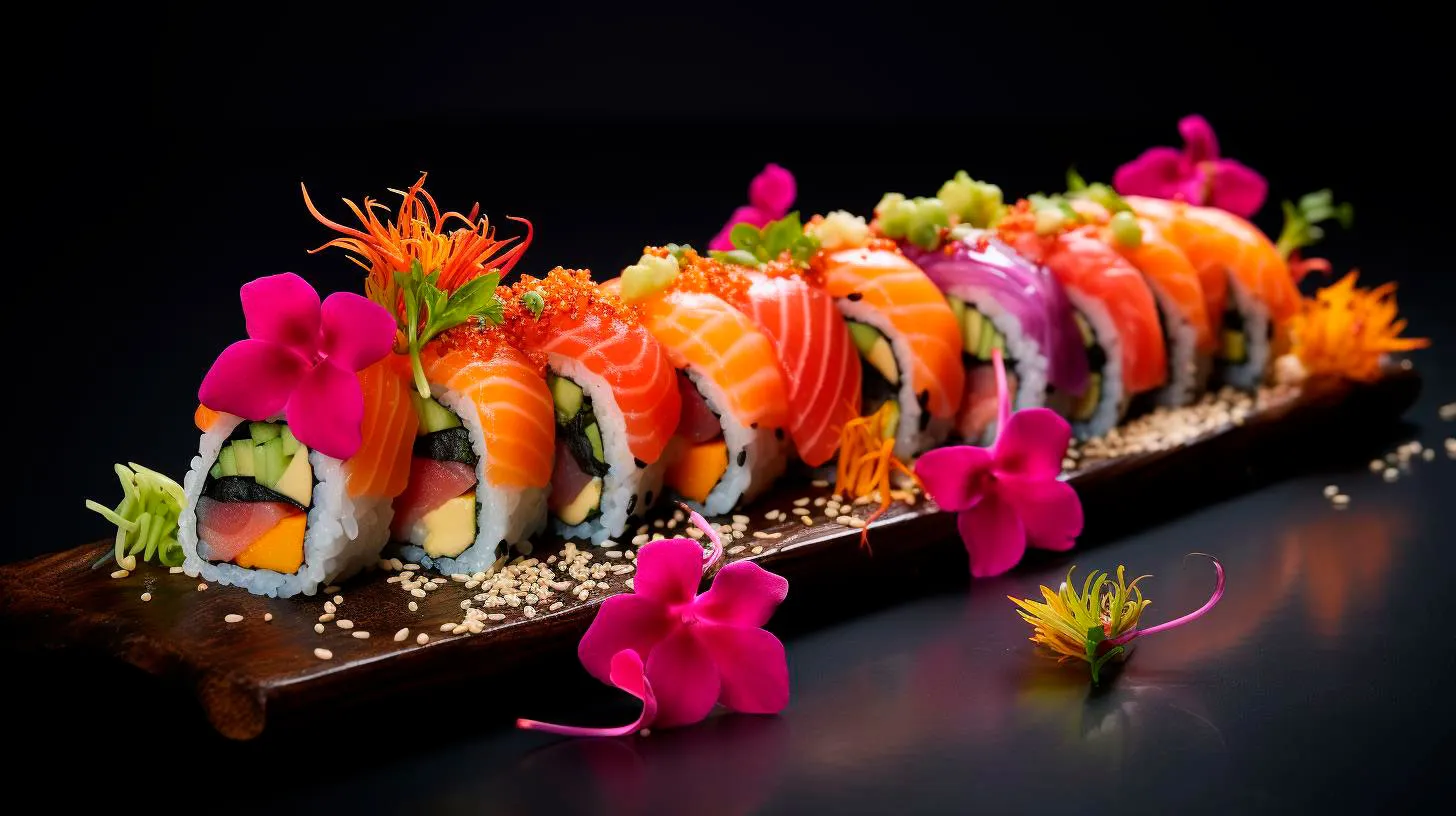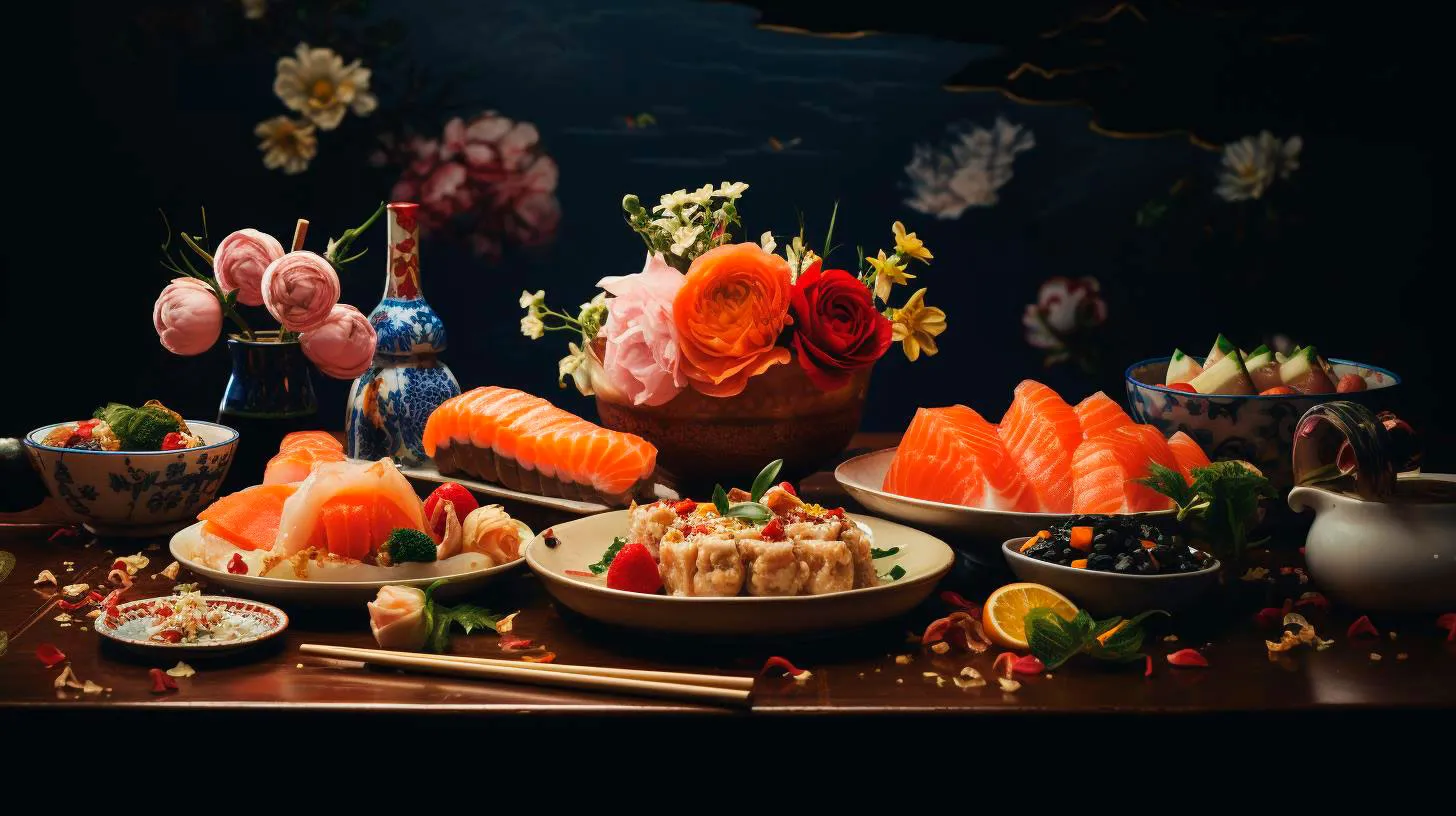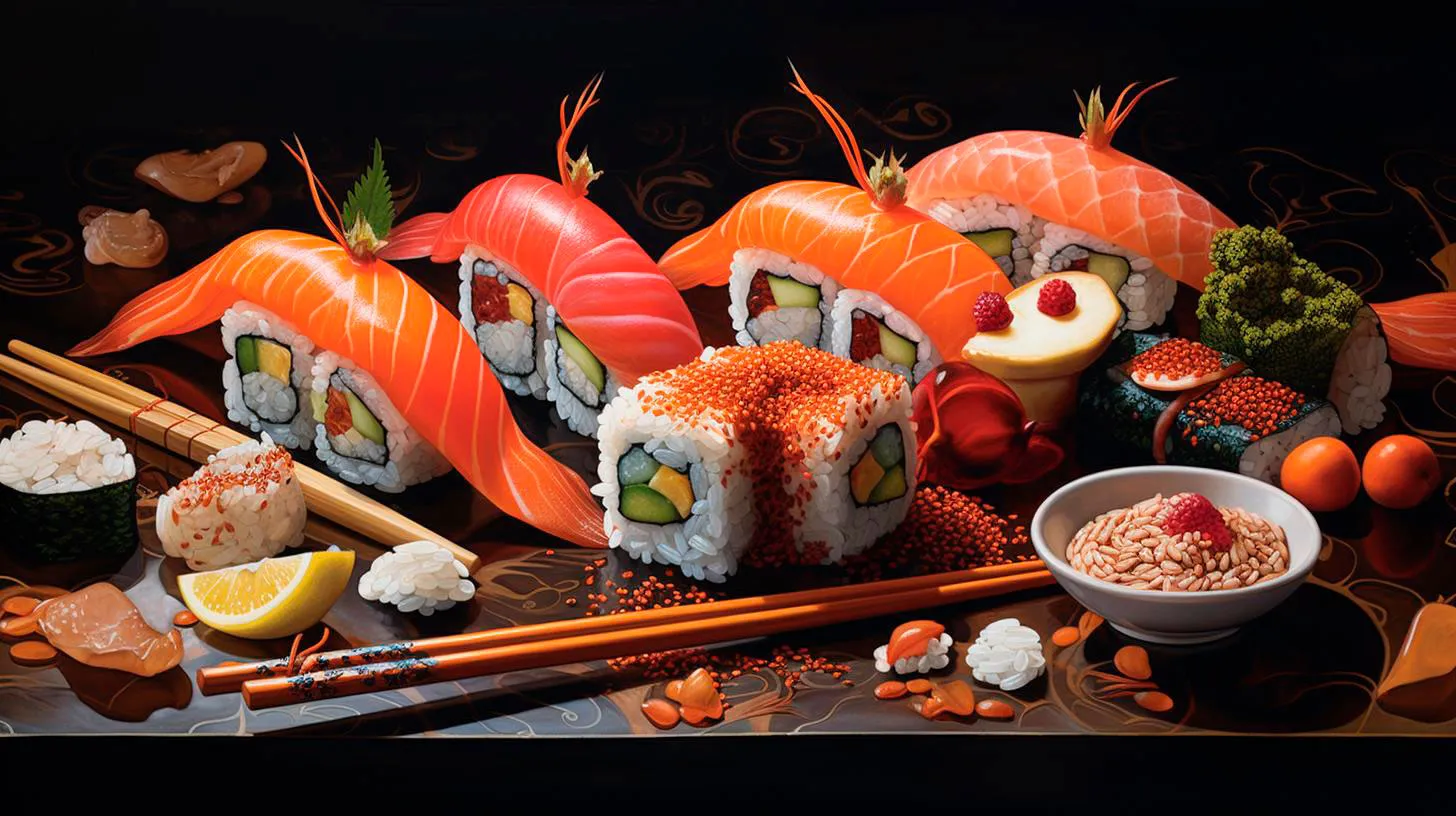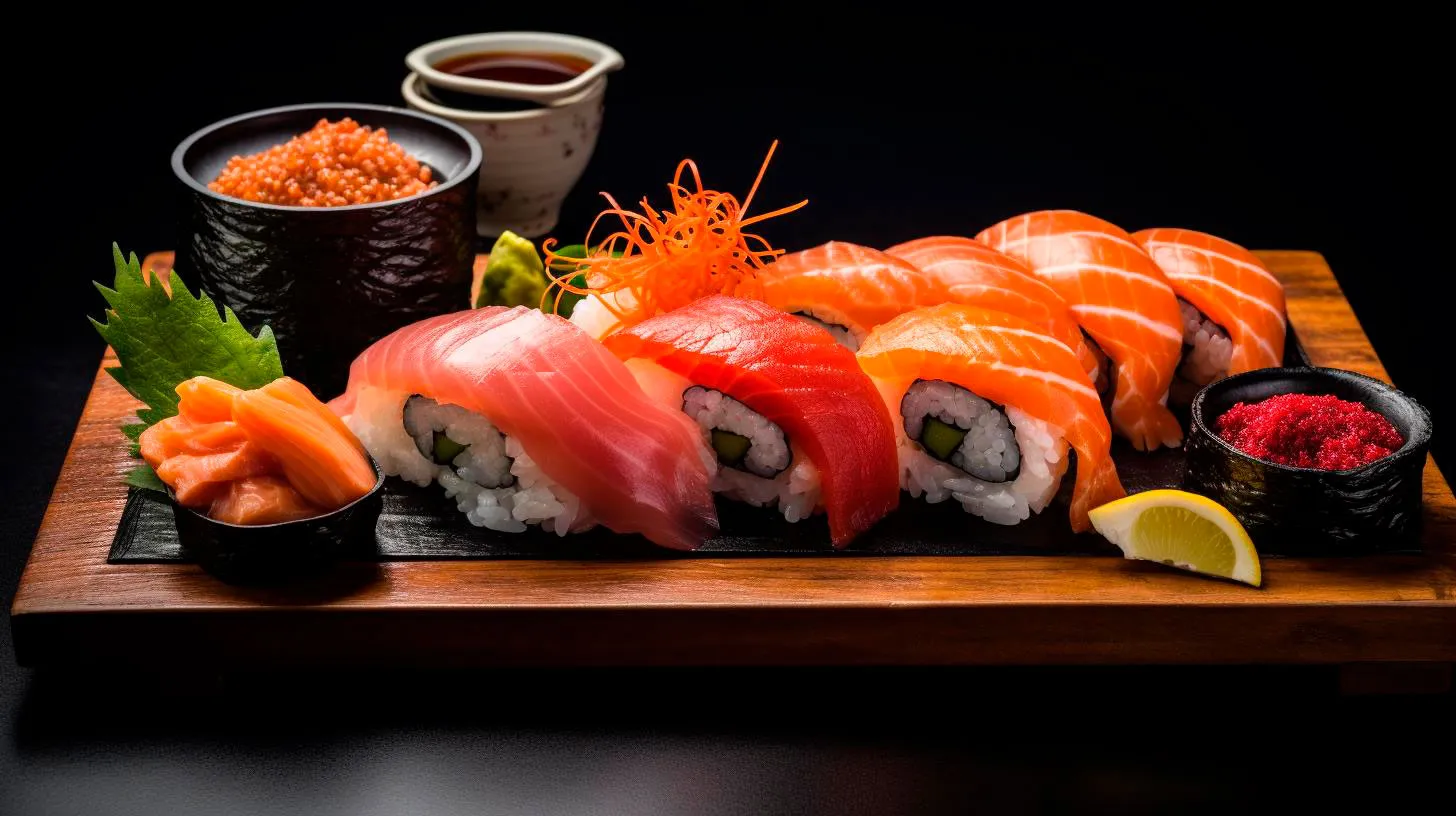The Artistry of Sushi: Mastering the Culinary Craft
In this article, we delve into the art of sushi-making, exploring its origins, techniques, and the skills required to master this ancient craft.
The Origins of Sushi
Sushi traces its roots back to ancient Japan, where it started as a way to preserve fish by fermentation. Over time, the concept of sushi evolved, and innovative chefs began to experiment with fresh fish and rice combinations. Today, sushi has become synonymous with Japanese cuisine, captivating food enthusiasts globally.
Sushi’s Intricate Techniques
The preparation of sushi requires meticulous attention to detail. Every step, from selecting the freshest ingredients to the final presentation, plays a crucial role in creating the perfect sushi. Here are some key techniques used by sushi masters:
- Nigiri: The most basic form of sushi, Nigiri involves placing a slice of raw fish on a small ball of vinegared rice.
- Maki: Maki sushi consists of rice and various fillings, such as fish, vegetables, and condiments, rolled in seaweed called nori.
- Sashimi: This technique involves serving fresh, thinly sliced fish without rice.
- Temaki: Temaki, or hand roll, is made by wrapping rice and fillings in a cone-shaped nori sheet.
The artistry of sushi lies not only in the techniques but also in the balance of flavors and textures. Sushi chefs carefully blend ingredients to create harmonious combinations that tantalize the taste buds.
Skills Required to Become a Sushi Master
Becoming a sushi master is no easy feat. It requires years of training, dedication, and a deep understanding of the craft. Here are some essential skills that aspiring sushi chefs must develop:
- Knife Skills: Sushi chefs must possess exceptional knife skills to precisely slice fish and other ingredients with finesse.
- Ingredient Selection: Choosing the finest and freshest ingredients is essential to creating exceptional sushi. Sushi masters have a keen eye for quality and freshness.
- Hand-Eye Coordination: The delicate art of sushi making demands excellent hand-eye coordination to create perfectly shaped and proportioned sushi pieces.
- Attention to Detail: Every sushi roll is meticulously crafted, requiring meticulous attention to detail. From the placement of ingredients to the final presentation, no detail is too small.
- Creativity: While adhering to tradition, sushi masters also showcase their creativity by experimenting with new flavors and combinations.
Key Takeaways and Advantages of Sushi Mastery
Mastering the art of sushi brings forth numerous advantages and unique experiences:
- Cultural Appreciation: By delving into sushi making, one gains deeper insight into Japanese culture, traditions, and culinary heritage.
- Culinary Mastery: Becoming a sushi master requires honing a wide range of culinary skills that can be applied to various cuisines.
- Visual Delight: Sushi’s intricate presentation and vibrant colors make it a feast for both the eyes and the taste buds.
- Health Benefits: Sushi is renowned for its healthy attributes, offering a nutritious mix of fresh fish, vegetables, and rice.
- Global Demand: With the rising popularity of sushi worldwide, mastering this culinary craft opens doors to a vast array of career opportunities in restaurants, hotels, and even private catering.
According to industry statistics, the global sushi market is projected to reach a value of $22.8 billion by 2025, with a compound annual growth rate of 4.1%. This growth further highlights the significance of sushi mastery in today’s culinary landscape.
In conclusion, sushi-making is an art form that combines technique, tradition, and creativity to produce an extraordinary culinary experience. Learning the skills required to become a sushi master not only offers cultural appreciation but also provides a gateway to a versatile and in-demand culinary career. So, embrace the artistry of sushi and embark on a journey that celebrates the fusion of flavor, precision, and visual delight.
Exploring Sushi Global Influence
In this article, we will delve into the global influence of sushi, its cultural significance, and the reasons behind its immense popularity.
The History and Origins of Sushi
Sushi dates back over a thousand years and has a rich history rooted in Japanese culture. Originally, sushi was a way of preserving fish by fermenting it with rice. However, over time, the fermentation process was abandoned, and sushi evolved into the form we know today.
During the Edo period in Japan, sushi underwent a revolutionary transformation. It was during this time that street food vendors began selling nigiri sushi, which is the most common type of sushi found today. These bite-sized vinegared rice balls topped with fresh slices of fish or other ingredients became a hit among locals and helped establish sushi as a staple food in Japanese cuisine.
With globalization and advancements in transportation, sushi made its way onto the international stage. Initially, sushi was introduced to the United States in the late 1960s but only gained mainstream popularity in the 1980s. Since then, it has spread to every corner of the globe and has become a culinary sensation.
The Global Influence of Sushi
The global influence of sushi is undeniable and can be attributed to several factors:
- Health Benefits: Sushi is often perceived as a healthy food option due to its emphasis on fresh seafood and the inclusion of nutrient-rich ingredients like seaweed and ginger. This perception has made sushi appealing to health-conscious individuals around the world.
- Diversity: Sushi offers a wide range of options to cater to different tastes and dietary preferences. From traditional raw fish varieties to vegetarian rolls and innovative fusion creations, sushi provides something for everyone.
- Haute Cuisine: Sushi has earned a reputation as a delicacy and is often associated with fine dining. Its elegant presentation and meticulous preparation make it a favorite among culinary enthusiasts.
- Instagram-Worthy: Sushi’s visually appealing nature has made it incredibly popular on social media platforms like Instagram. People enjoy sharing photos of beautifully crafted sushi rolls and vibrant sashimi platters, further boosting its popularity.
Sushi’s Cultural Significance
Sushi carries cultural significance beyond its culinary appeal. It represents traditional Japanese craftsmanship and meticulous attention to detail. The art of sushi making requires years of practice and a deep understanding of flavor combinations, textures, and presentation.
In Japan, sushi chefs are highly respected and often regarded as artists. The training process can be rigorous, including years of apprenticeship under a master sushi chef. This level of dedication and craftsmanship has been recognized and admired worldwide.
Sushi has also influenced other cuisines, leading to the emergence of fusion sushi. This blending of flavors and styles has resulted in the creation of unique dishes that combine traditional Japanese techniques with local ingredients and preferences.
Key Takeaways
Sushi’s global influence is a testament to its appeal and versatility. Key takeaways from exploring sushi’s global influence include:
- Sushi has a history that spans centuries, evolving from a preservation method to a worldwide culinary phenomenon.
- The health benefits, diversity, haute cuisine status, and popularity on social media have contributed to sushi’s global popularity.
- Sushi showcases Japanese craftsmanship and has become a symbol of cultural pride.
- The fusion of flavors and styles has resulted in innovative sushi creations.
As sushi continues to captivate taste buds and expand its reach, it is clear that its global influence is here to stay. So, whether you are enjoying classic nigiri or indulging in creative sushi rolls, take a moment to appreciate the cultural and culinary journey that brought this beloved cuisine to your plate.
Celebrating Traditions: Sushi in Cultural Festivities
In this article, we will explore the significance of sushi in different cultural festivities and how it has become a global symbol of unity and gastronomic delight.
The Cultural Significance of Sushi
Sushi originated in Japan and has become an integral part of Japanese culture. Traditionally, sushi was prepared to preserve fish by fermenting it with rice and salt. Over time, it evolved into a delicately crafted culinary art form. Today, it represents not only Japanese cuisine but also embodies the spirit of precision, elegance, and respect for high-quality ingredients.
Sushi has transcended its cultural boundaries and has become a cherished dish in various cultural festivities worldwide. Let’s take a look at how sushi has been incorporated into different celebrations:
Sushi in Chinese New Year
In China, sushi has become a popular dish during the annual Chinese New Year celebration, which falls between January and February. The round shape and vibrant colors of sushi symbolize wealth, good luck, and the reunion of families. Sushi is often served during family gatherings and shared among relatives and friends. The inclusion of sushi in Chinese New Year festivities shows the cultural exchange and appreciation between Japan and China.
Sushi in American Fourth of July
In the United States, sushi has become a staple food during Fourth of July celebrations. As Americans celebrate their independence, sushi brings an exquisite touch to backyard barbecues and picnics. The fusion of American and Japanese cuisines represents cultural diversity, showcasing the country’s melting pot of various traditions and flavors.
Sushi in Brazilian Carnival
Brazil’s vibrant and colorful Carnival is a true feast for the senses, and sushi has woven its way into this exuberant celebration. While traditional Brazilian dishes take center stage, sushi has found its place on the menu, providing a unique and refreshing contrast. It caters to those seeking a lighter and healthier option amidst the indulgent carnival fare. The fusion of Japan’s culinary traditions with Brazil’s energetic festival exemplifies the global influence of sushi.
Advantages of Celebrating traditions with Sushi
Integrating sushi into cultural festivities offers several advantages, creating a harmonious blend of tradition and modernity. Here are some key advantages:
- Global Appeal: Sushi’s popularity across cultures appeals to a diverse audience, promoting cultural exchange and fostering unity.
- Aesthetic Appeal: The visually striking presentation of sushi makes it an ideal centerpiece during celebrations, elevating the overall dining experience.
- Healthy Option: Sushi’s emphasis on fresh ingredients, lean proteins, and vegetables makes it a healthier choice, catering to the increasing demand for nutritious options.
- Symbolism: The symbolism associated with sushi, such as luck, prosperity, and friendship, adds an extra layer of meaning to cultural festivities.
Key Takeaways
Sushi has become a global symbol of unity, gastronomic delight, and cultural exchange. By integrating sushi into cultural festivities, a delightful fusion of traditions unfolds. Here are the key takeaways:
- Sushi has gained immense popularity and is now a part of cultural festivities worldwide.
- Its inclusion in different celebrations showcases the global appeal and cultural exchange.
- Advantages include its visual appeal, health-conscious elements, and symbolic significance.
- Celebrating traditions with sushi offers a unique and unforgettable dining experience.
So next time you join a cultural celebration or festivity, keep an eye out for sushi on the menu. Its presence not only adds a delectable treat but also represents the beauty of cultural unity and appreciation.



